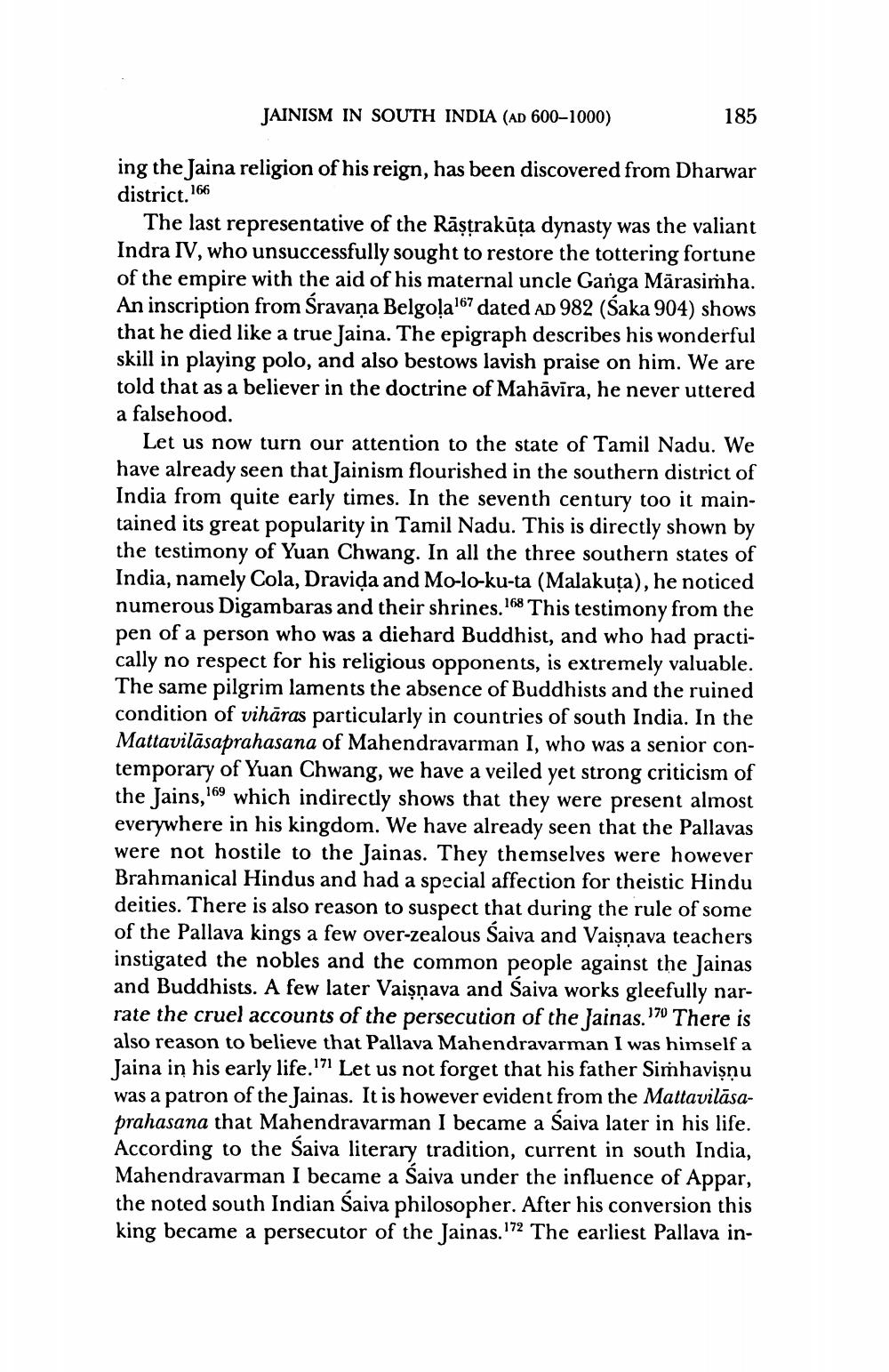________________
JAINISM IN SOUTH INDIA (AD 600-1000)
185
ing the Jaina religion of his reign, has been discovered from Dharwar district. 166
The last representative of the Rāşțrakūta dynasty was the valiant Indra IV, who unsuccessfully sought to restore the tottering fortune of the empire with the aid of his maternal uncle Ganga Mārasimha. An inscription from Sravana Belgo!a167 dated AD 982 (Saka 904) shows that he died like a true Jaina. The epigraph describes his wonderful skill in playing polo, and also bestows lavish praise on him. We are told that as a believer in the doctrine of Mahavira, he never uttered a falsehood.
Let us now turn our attention to the state of Tamil Nadu. We have already seen that Jainism flourished in the southern district of India from quite early times. In the seventh century too it maintained its great popularity in Tamil Nadu. This is directly shown by the testimony of Yuan Chwang. In all the three southern states of India, namely Cola, Dravida and Mo-lo-ku-ta (Malakuta), he noticed numerous Digambaras and their shrines. 168 This testimony from the pen of a person who was a diehard Buddhist, and who had practically no respect for his religious opponents, is extremely valuable. The same pilgrim laments the absence of Buddhists and the ruined condition of vihāras particularly in countries of south India. In the Mattavilāsaprahasana of Mahendravarman I, who was a senior contemporary of Yuan Chwang, we have a veiled yet strong criticism of the Jains, 169 which indirectly shows that they were present almost everywhere in his kingdom. We have already seen that the Pallavas were not hostile to the Jainas. They themselves were however Brahmanical Hindus and had a special affection for theistic Hindu deities. There is also reason to suspect that during the rule of some of the Pallava kings a few over-zealous Saiva and Vaişņava teachers instigated the nobles and the common people against the Jainas and Buddhists. A few later Vaişņava and Saiva works gleefully narrate the cruel accounts of the persecution of the Jainas.170 There is also reason to believe that Pallava Mahendravarman I was himself a Jaina in his early life.171 Let us not forget that his father Simhavisnu was a patron of the Jainas. It is however evident from the Mattavilāsaprahasana that Mahendravarman I became a Saiva later in his life. According to the Saiva literary tradition, current in south India, Mahendravarman I became a Saiva under the influence of Appar, the noted south Indian Saiva philosopher. After his conversion this king became a persecutor of the Jainas. 172 The earliest Pallava in




